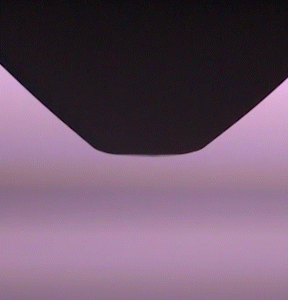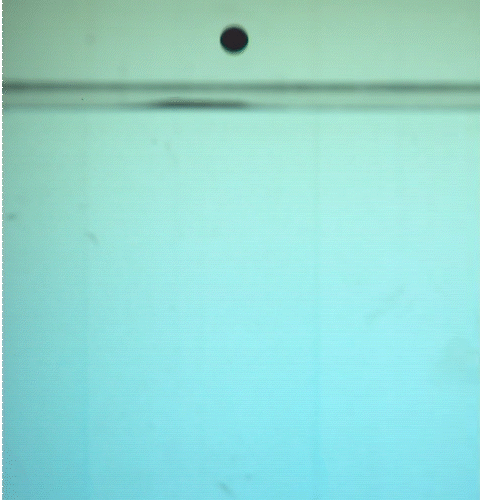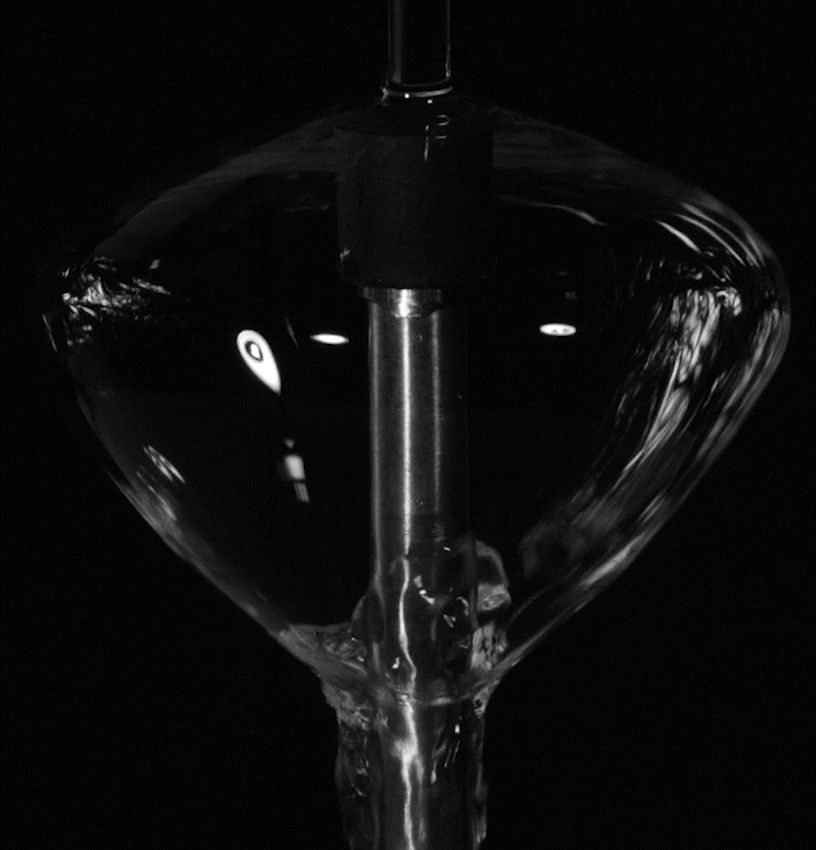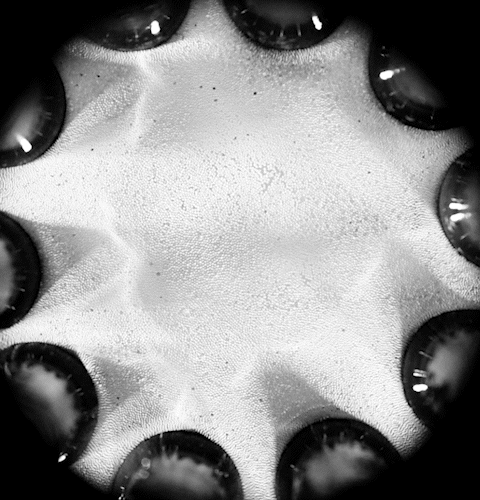Research
My research is motivated by the societal need to understand the physics of interfacial flow in multiphase and complex media. Through a combination of careful experimentation and rigorous analysis, I investigate fundamental problems with broad implications, including industrial processes such as heat and mass transfer, the behavior of natural phenomena, and the design of systems for controlled fluid motion. Within this overarching mission, my current research themes are:
- Interfacial Dynamics
- Multiphase Transport Phenomena
- Complex Fluids
Ongoing Projects

Drop–bath impacts
We investigate how the surrounding gas influences the impact dynamics of submillimeter drops on a liquid bath. Using a vacuum chamber, we systematically vary the gas type and pressure to examine transitions between coalescence, bouncing, and transient floating. Experimental results are directly compared with a computational model that captures air-layer evolution through a lubrication framework incorporating nanoscale gas kinetic effects and disjoining pressure.

Water entry
A solid sphere impacting a quiescent bath can form an air cavity whose evolution depends on the impact conditions and sphere wettability. This project investigates how modifying the bath surface, either through active deformation or coating the surface with a secondary medium, affects cavity dynamics and can dramatically alter the physical mechanisms governing cavity closure.

Liquid sheets and bells
We study the formation, breakup, and stability of axisymmetric liquid sheets and bell-like structures generated by the impact of a liquid jet on a small target. Our research focuses on how the geometry of the impactor controls the dynamics and stability of the resulting sheet, and how the two-way coupling between fluid ejection and solid shape can be harnessed to manipulate liquid flows and design responsive, force-generating surfaces.

Controlling granular interfaces
An interface coated with a monolayer of granular particles exhibits a range of useful mechanical properties. In this project, we use a variety of probes to mechanically manipulate the granular interface by imposing local interfacial height gradients. The ability to perforate these interfaces is tested as a new method for modifying local particle concentrations—a potential route for tailoring overall interfacial properties.

Aerodynamic effects on bead-on-fiber flow
Building on our previous work on the dynamics and morphology of liquid bead-on-fiber flows, we are investigating their potential in heat and mass transfer applications. Using a custom wind column, we explore how a counterflow alters the propagation and properties of bead patterns. These flow modifications are then evaluated for their implications in using bead-on-fiber systems for particle scrubbing.
Past Projects
- Drop rebound (Gabbard et al. 2025), (Aguero et al. 2025)
- Morphology and dynamics of liquid bead-on-fiber patterns (Gabbard & Bostwick 2021), (Gabbard & Bostwick 2021), (Gabbard & Bostwick 2023), (Gabbard et al. 2025)
- Capillary phenomena in liquid flowing down fiber pairs (GFM 2022), (Gabbard & Bostwick 2023), (Gabbard & Bostwick 2024), (Gabbard et al. 2024)
- Particle capature via dip coating of viscous and non-Newtonian solutions (Copeland et al. 2023), (Ding et al. 2024)
- Particle capture using bead-on-fiber flow (Gabbard et al. 2025)
- Microfluidics: electrophoresis of microparticles and electrokinetic flow instabilities (Dacus et al. 2022), (Bentor et al. 2024), (Chen et al. 2025a), (Chen et al. 2025b)
- Particle-laden interface dynamics and stability (GFM 2023), (Gabbard et al. 2024) , (Gabbard et al. 2025)